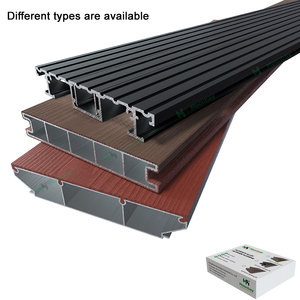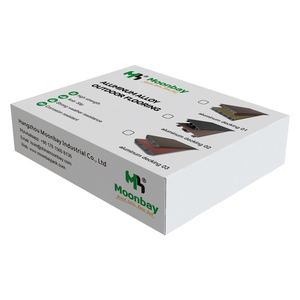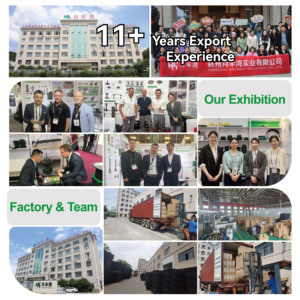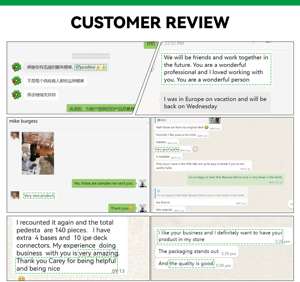(2310 products available)














































































































































































































































Aluminium cladding texture comes in numerous styles and finishes. Each type offers distinct aesthetic appearances and performance characteristics. Below are the types of aluminium cladding textures:
Brushed Aluminium
This texture has a linear pattern created by fine, parallel lines. The lines are created during the brushing process, where a wire brush or abrasive pad is used. The light-sheen brushed aluminium texture reduces glare and reflects light while offering a semi-matte finish. It has a smooth feel and is popular in modern architecture as it gives a sleek, contemporary appearance.
Embossed Aluminium
This texture has a raised pattern created by pressing a die onto the aluminium. The aluminium's surface is permanently deformed to create a design. The embossed aluminium has a 3D effect and is highly durable. The patterns range from simple geometric shapes to intricate designs. The texture is popular for decorative applications and facades, and it requires minimal maintenance.
Perforated Aluminium
This texture has holes punched through the aluminium sheets. The holes create patterns of light and shadow. The size and shape of the holes vary, from round to square to custom shapes. Perforated aluminium is often used for sunscreens, privacy screens, and decorative panels. It allows airflow and natural light and can be coated in different colours.
Powder-Coated Aluminium
This texture is created by applying a powder that is electrostatically charged and then baked in an oven to form a durable skin. This cladding comes in different colours and finishes. It provides resistance to fading and scratching. The powder-coated aluminium can have a smooth, matte, or textured finish.
Textured Powder-Coated Aluminium
This is a sub-type of powder-coated aluminium. It has a patterned surface created by a textured powder. The finishes include wood grain, stone, or rough-textured matte. These finishes mimic the appearance of natural materials and offer extra durability. This cladding requires less maintenance and has high customisation options.
Satin-Anodized Aluminium
This texture has a smooth, matte finish. The anodizing process is electrochemical and forms a protective layer of oxide on the aluminium. This oxide layer is integrated into the aluminium and is very durable. The satin-anodized aluminium reflects light diffusion and offers a subtle sheen. It is commonly used for interior applications.
Hammered Aluminium
It has a decorative, dimpled texture that looks like a hammered effect. The aluminium is hammered either manually or using a machine that creates a hammered pattern. It offers an aesthetic appearance, and the texture diffuses light and creates shadows. Hammered aluminium is durable and used for decorative doors and accents.
The use of aluminum cladding for houses offers improved aesthetics, durability, energy efficiency, and cost effectiveness. Below are the key features and functions of aluminum cladding:
Durability
Aluminum cladding is durable and strong. It can withstand extreme weather conditions, including heavy rains, winds, and snow. Aluminum cladding is not easily damaged, deteriorated, or corroded. This ensures that the exterior of the building retains its appearance and structural integrity over time.
Low Maintenance
Aluminum cladding requires little to no maintenance. This helps to reduce the overall maintenance cost of the building. The aluminum cladding texture can be cleaned easily with water and detergent when it gets dirty.
Weather Resistance
Aluminum cladding is weather resistant. It protects the house from harsh weather elements, ensuring the longevity of the building. It prevents water penetration, which can cause mold, mildew, and rot. This keeps the structural components of the house, such as wood, dry and intact. It also prevents wind damage and minimizes the risk of corrosion.
Aesthetic Appeal
Aluminum cladding improves the aesthetics of a building. It comes in different colors, finishes, and textures that can match any architectural design. The sleek and modern look of aluminum cladding enhances the visual appeal of residential and commercial buildings. Its ability to create clean lines and smooth surfaces contributes to a contemporary design.
Insulation
Aluminum cladding improves the energy efficiency of a building. Insulated aluminum cladding prevents heat transfer, keeping buildings warm in winter and cool in summer. This reduces the energy cost of homeowners. A well-insulated house requires less energy for heating and cooling, leading to lower utility bills.
Fire Resistance
Some types of aluminum cladding have fire-resistant properties. They can slow down the spread of flames and give occupants more time to evacuate in case of fire. Fire-resistant aluminum cladding improves the overall fire rating of a building.
Environmental Friendly
Aluminum is recyclable. This makes aluminum cladding a sustainable option for building exteriors. The use of aluminum cladding helps to reduce the amount of waste in landfills.
Aluminium cladding textures serve a variety of functions in both residential and commercial construction. Here are some common application scenarios:
Building Facades
The textured aluminium cladding panels can be fixed to the building facade for aesthetic and functional purposes. The panels improve the building's appearance while protecting it from harsh weather elements.
Commercial Properties
Textured aluminium panels are commonly used on commercial property exteriors. This is due to their longevity, low maintenance requirements, and capacity to enhance the commercial property's visual appeal. The panels offer a professional look to banks, hotels, office buildings, and shopping centers.
Residential Houses
Textured aluminium cladding panels are also used on residential houses. The panels give the house a modern look and also protect it from weather elements. They also allow homeowners to express their individual personality through the house's design.
Noise Barriers
Some textured aluminium panels, like those with a wood grain finish, can function as sound barriers. Their solid construction helps reduce noise pollution, particularly in urban regions or near busy roadways. These panels offer both aesthetic and acoustic functions in such applications.
Interior Design
Although not as common, textured aluminium cladding panels can be used indoors. For instance, brushed or anodized aluminium panels can be integrated into a home's interior design. These panels can be used to create a contemporary look in the interior design of a house or a room.
Commercial Interiors
Textured aluminium panels can also be used in commercial property interiors. For instance, polished panels can be used in banks to create a feeling of stability and wealth. Additionally, these panels can be used in restaurants to create a modern look and an attractive ambiance.
Architectural Accents
Textured aluminium panels can be used as architectural accents in both commercial and residential properties. For instance, the panels can be used to highlight a building's entrance, a home's fireplace surround, or a feature wall in a restaurant. These panels draw attention to the architectural features while adding a touch of elegance and sophistication.
Branding and Signage
Some textured aluminium cladding panels can be used for branding and signage. The durable nature of these panels ensures that logos, brand names, and other signage remain visible and appealing. Additionally, the panels can be used to create distinctive and memorable building exteriors that showcase a business's identity and values.
When choosing an aluminum cladding texture, it is important to consider a few things to ensure that the products will meet the needs of the project. Here are some of them:
Durability
Check if the aluminum cladding texture is durable. It should be able to withstand harsh weather conditions without getting damaged. A durable aluminum cladding will require minimal maintenance and will last for many years.
Architectural design
Consider the architectural design of the building. The aluminum cladding texture should complement the design of the building. Choose a cladding with a finish that will enhance the beauty of the building. The color of the cladding should also be considered.
Functionality
Functionality should be the first thing to consider when choosing aluminum cladding for exterior walls. Consider the purpose of the wall and the requirements of the project. If the wall is meant to provide insulation, choose cladding with good insulation properties. If it is meant to be a decorative wall, choose cladding that looks good. Think about the wall's needs and choose cladding that meets those needs.
Texture and finish
The first thing to notice about a building is its texture and finish. Choose an aluminum cladding texture that has the right finish and texture to make the building look beautiful. Consider the building's style and choose a cladding finish and texture that will enhance its beauty.
Eco-friendliness
Choose aluminum cladding textures that are eco-friendly. This means that the cladding manufacturers used sustainable practices when producing the cladding. Eco-friendly aluminum cladding textures are produced without harming the environment.
Cost
Aluminum cladding comes in different price ranges. Consider the cost of the cladding and choose one that is within the budget. However, don't choose the cheapest option available. Balance between quality and price. Choose aluminum cladding textures that fall within the budget but are also of high quality.
Q1. Is aluminum cladding a good idea?
A1. Absolutely. Aluminum is a durable, weather-resistant material. It protects the house from harsh weather and requires low maintenance. Aluminum cladding also improves the appearance of the house.
Q2. How long does aluminum cladding last?
A2. Aluminum cladding can last between 40 - 60 years. This depends on factors like the quality of the aluminum, installation process, and environmental conditions.
Q3. What is the difference between cladding and siding?
A3. Cladding is a non-load bearing material attached to a building's exterior. It provides insulation and weather resistance. Siding is a load-bearing exterior wall covering. It is attached directly to the building's frame.
Q4. What is the difference between aluminum and steel?
A4. Aluminum is a lightweight material. It doesn't rust, but it can dent easily. Steel is heavier and stronger. Unlike aluminum, steel rusts. However, galvanized steel cladding is highly weather-resistant.
Q5. What are the disadvantages of aluminum cladding?
A5. Aluminum cladding has many advantages. Its main disadvantage is that it can easily dent from impact. This includes falling tree branches and flying debris during storms. Using thicker gauge aluminum helps reduce this risk.